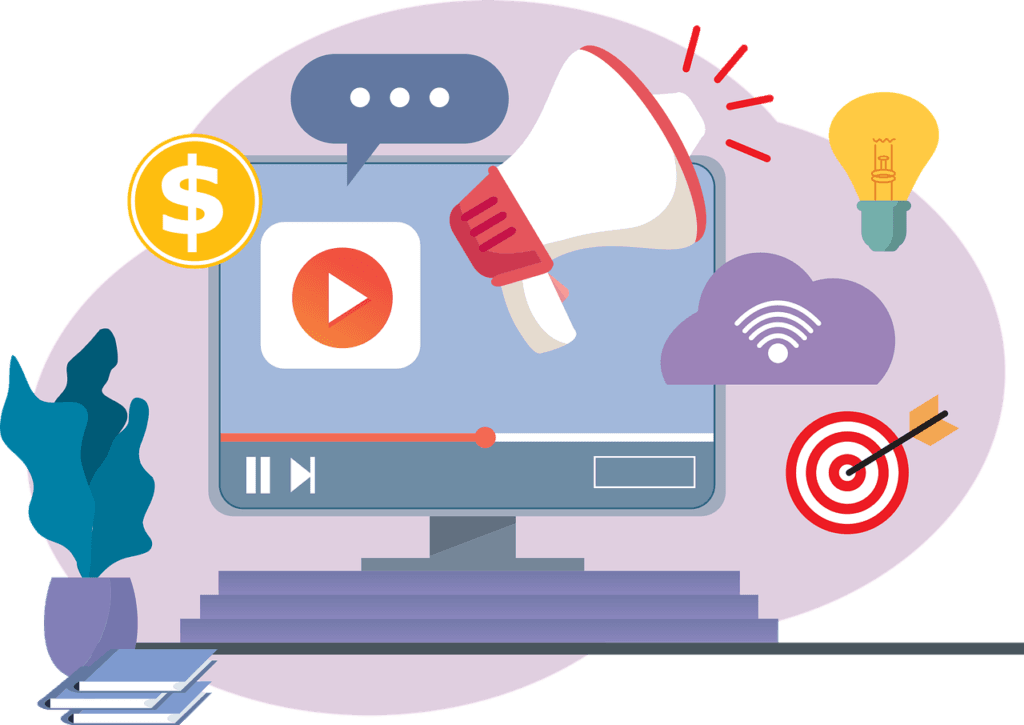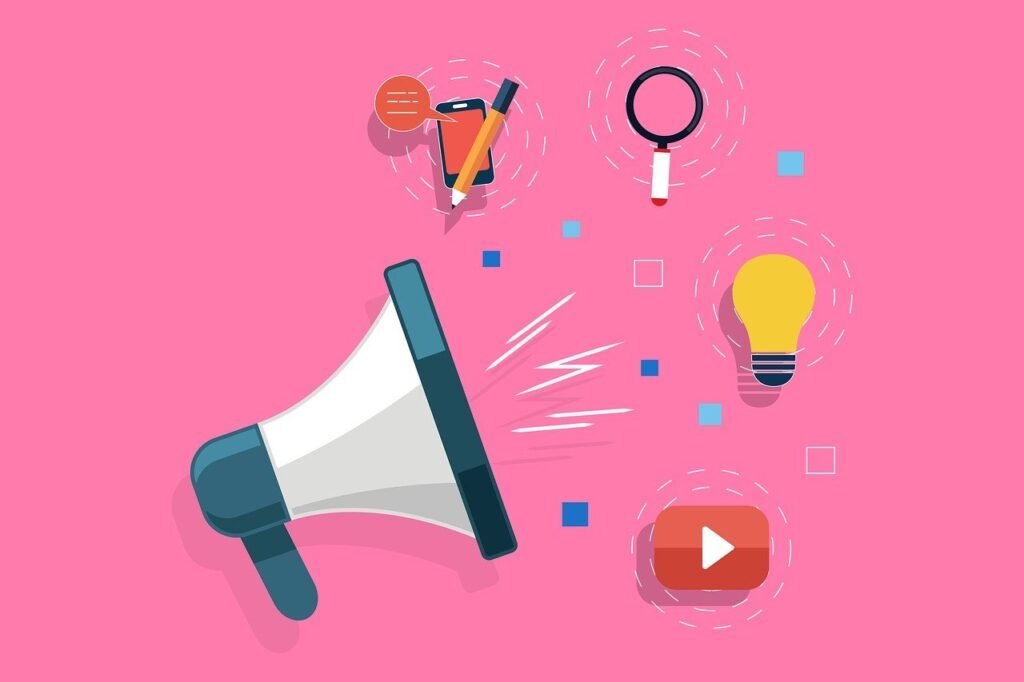Artificial Intelligence (AI) has taken the marketing world by storm. From automating routine tasks to analyzing customer behavior, AI promises to make marketing faster, smarter, and more efficient. But as powerful as it sounds, adopting AI doesn’t come without costs, and many businesses worry about the price tag. How do you leverage AI’s potential without overspending or risking your budget?
This guide will walk you through the practical steps to make the most of AI in your marketing strategy, showing you how to navigate the AI boom while staying budget-conscious. With the right approach, AI can be an accessible tool that drives results without emptying your bank account.
Start with Clear, Measurable Goals
Define What You Want to Achieve with AI
The first step to using AI effectively and affordably is to set clear goals. AI is a tool that can be applied to many areas of marketing—customer service, content creation, lead generation, and more. But to avoid unnecessary spending, define what you want AI to help you achieve. Are you looking to improve customer response times, boost engagement, or increase conversions?
For instance, if you’re a small e-commerce store aiming to improve customer service, AI chatbots could be a valuable addition. On the other hand, if your goal is to analyze customer data for better personalization, an AI analytics tool might be more effective. Knowing your goals will help you choose the right tools and prevent wasting resources on features you don’t need.
Focus on One Area at a Time
Instead of diving into multiple AI solutions at once, start with a single area where you expect the most impact. For example, if email marketing is your top priority, focus on AI tools that optimize email campaigns, like AI-driven segmentation or personalized content suggestions. Once you see results in one area, you can expand to other AI applications.
This approach minimizes risk and allows you to refine your strategy as you go, making adjustments based on what’s working. By focusing on one area at a time, you stay in control of your budget and avoid the temptation to overspend on various tools that may not deliver immediate value.
Step 1: Research Affordable AI Tools and Platforms
Look for AI Solutions Designed for Small Businesses
There’s a common misconception that AI is only accessible to big brands with huge budgets. In reality, there are many affordable AI tools designed specifically for small businesses and startups. Platforms like Mailchimp, HubSpot, and Canva offer AI-powered features without the high costs often associated with enterprise-level AI solutions.
For instance, Mailchimp uses AI to suggest optimal send times for email campaigns, helping you reach your audience when they’re most likely to engage. Canva’s AI-driven design suggestions make it easy to create professional visuals, even if you’re not a designer. By choosing tools that cater to small businesses, you get access to powerful AI without the heavy price tag.
Compare Subscription-Based and Pay-As-You-Go Options
Some AI tools operate on a subscription basis, while others offer pay-as-you-go pricing. Subscription models can be more economical if you’re using a tool frequently, but pay-as-you-go options may save you money if you only need AI intermittently. Before committing, assess how often you’ll use a tool and calculate which payment option makes the most sense for your budget.
For example, if you only plan to run a few AI-driven ad campaigns each quarter, a pay-as-you-go tool might be more cost-effective. But if you’re using AI analytics daily to track user behavior, a subscription might offer better value. Carefully choosing between these options ensures you’re not paying for features or access you don’t fully use.
Step 2: Prioritize AI Applications That Offer Immediate ROI

Focus on Tools That Improve Efficiency or Automate Tasks
One of the biggest benefits of AI is its ability to automate routine tasks, freeing up your time and resources. Look for AI applications that can handle repetitive work, like scheduling social media posts, personalizing email content, or answering common customer questions. These tools provide immediate value by saving time, allowing your team to focus on high-impact activities.
For instance, an AI chatbot can handle frequently asked questions, reducing the workload for your support team. AI-driven social media schedulers can post content at optimal times, maximizing reach without constant manual input. By automating these basic tasks, you can quickly see a return on investment and free up resources for other areas.
Choose Analytics Tools for Data-Driven Decisions
AI analytics tools provide insights into customer behavior, helping you understand your audience better and make smarter decisions. If you want to boost revenue without spending more, these insights are invaluable. For instance, AI can analyze past purchase behavior to predict future trends or identify customer segments that are most likely to convert.
Platforms like Google Analytics or Zoho Analytics offer AI-driven insights into metrics like customer demographics, traffic sources, and conversion paths. With this information, you can optimize your campaigns, focusing on what works and eliminating what doesn’t—without additional spending on guesswork. Analytics-driven AI tools turn data into actionable insights, making every marketing dollar count.
Step 3: Use AI to Enhance, Not Replace, Your Team’s Efforts
Embrace AI as a Support Tool, Not a Substitute
AI is powerful, but it’s not a magic bullet. Rather than replacing human efforts, use AI to support and enhance what your team is already doing. AI excels at handling repetitive tasks and data analysis, but human creativity, empathy, and strategic thinking remain irreplaceable. When AI works alongside your team, it can amplify results without disrupting the personal touch that’s crucial in marketing.
For example, if you’re using AI for content creation, let the AI handle the data-driven aspects, like SEO optimization or topic suggestions, while your team focuses on crafting engaging, authentic messaging. This combination ensures that your content is both effective and genuine, resonating with readers in a way that AI alone may not achieve.
Train Your Team to Maximize AI’s Potential
Investing in AI tools is only half the battle; your team needs to know how to use them effectively. Spend time training your team on how to work with AI, so they can use it to its full potential. Many AI platforms offer tutorials, customer support, and knowledge resources that can help your team get up to speed quickly.
When your team understands how AI works, they’re better equipped to integrate it into their daily routines, maximizing its impact. For instance, teaching your social media manager to use AI scheduling tools ensures they’re making the most of every post, while training your data analyst on AI-driven analytics can lead to smarter, faster insights. Proper training ensures that AI tools become valuable assets rather than underused expenses.
Step 4: Track and Measure the Performance of AI-Driven Campaigns

Set Clear Metrics and Benchmarks
To know if an AI tool is truly driving results, set clear metrics and benchmarks to track its performance. Common metrics could include engagement rates, conversion rates, lead generation, and time saved. Define what success looks like for each AI-driven campaign, so you can measure whether the tool is meeting your expectations.
For example, if you’re using AI in email marketing, metrics like open rates, click-through rates, and conversion rates provide a picture of how well the AI-driven personalization is working. Tracking these numbers over time helps you identify areas of success and areas for improvement, ensuring that your investment in AI pays off in measurable results.
Review Results Regularly and Adjust as Needed
AI tools don’t work on autopilot forever. As you collect data on your campaigns, regularly review the results to see if the tool continues to deliver value. If engagement drops or conversion rates stagnate, reassess your strategy and make adjustments to optimize performance. This regular check-in ensures you’re always getting the best ROI from your AI tools.
For instance, if you notice that an AI-driven chatbot is handling fewer inquiries over time, consider updating the chatbot’s responses or re-evaluating its placement on your website. By refining your approach, you can maximize AI’s impact and keep your campaigns aligned with changing customer needs.
Step 5: Start Small and Scale Gradually
Begin with Low-Cost or Free AI Tools
If you’re new to AI, start with low-cost or free options to get a feel for how it fits into your marketing strategy. Many AI platforms offer free tiers, trials, or limited-access versions that provide basic functionality without requiring a big investment. These options allow you to experiment with AI in a risk-free environment.
For example, try free AI-driven analytics from Google Analytics or use a free version of an AI-powered social media scheduler like Buffer. These tools give you hands-on experience with AI’s potential without committing financially. As you gain confidence and see results, you can scale up to paid versions with more features.
Scale Based on Results, Not Trends
As your familiarity with AI grows, you may be tempted to invest in more tools or features. However, scaling should be based on proven results rather than trends or the latest AI buzzword. Only invest in additional AI solutions if they clearly support your marketing goals and have demonstrated success in initial tests.
For instance, if AI-driven email personalization leads to a significant boost in engagement, consider expanding its use across more campaigns. But if an AI tool fails to deliver, resist the urge to invest further just because it’s popular. Scaling based on results keeps your AI investments strategic and focused, helping you avoid wasteful spending on tools that don’t drive revenue.

Related: Check out our free tools:

Step 6: Monitor Industry Developments for Emerging, Budget-Friendly AI Solutions
Stay Informed Without Feeling Pressured to Invest
The world of AI is constantly evolving, and new tools are launched regularly. Stay informed about industry developments, but don’t feel pressured to adopt every new AI solution that hits the market. Instead, keep an eye out for affordable AI options that have a track record of success and align with your brand’s goals.
Follow industry news, attend webinars, or subscribe to newsletters that highlight budget-friendly AI tools and their practical applications. By staying informed, you position yourself to take advantage of high-value, low-cost tools when the time is right, without getting swept up in the hype.
Explore Open-Source and Community-Driven AI Options
Many open-source AI tools offer powerful capabilities without the high costs associated with proprietary software. Platforms like TensorFlow, Hugging Face, or OpenAI provide access to machine learning models, allowing you to build custom solutions without starting from scratch. Community-driven tools often have active forums where you can find advice, tips, and support, making it easier to implement AI affordably.
For instance, if you need a chatbot for customer support, explore open-source chatbot frameworks that you can customize to fit your brand. Open-source options give you control over the tool’s functionality and design, making them a cost-effective alternative to commercial solutions.
Step 7: Embrace AI as a Long-Term Strategy, Not a Quick Fix

Set Realistic Expectations for AI’s Impact
One of the biggest mistakes brands make with AI is expecting immediate, dramatic results. While AI can streamline processes and enhance your marketing efforts, it’s not an overnight solution. Sustainable growth with AI is a gradual process, where improvements build over time as you fine-tune tools and strategies.
Set realistic expectations with your team and stakeholders by framing AI as a long-term investment. Focus on small, incremental gains—such as improved engagement rates, higher click-through rates, or reduced response times in customer service. Over time, these small improvements will add up, creating a measurable impact on your bottom line. When you view AI as a steady path to growth rather than a quick fix, it’s easier to stay committed and make smarter decisions.
Regularly Reassess AI’s Role in Your Marketing Strategy
AI technology and market trends are constantly evolving, so it’s essential to revisit your AI strategy regularly. Schedule quarterly or biannual reviews to assess which tools are delivering the expected results and which might need adjustments. As your brand grows and your goals shift, AI’s role in your strategy should evolve as well.
For instance, if you initially used AI for social media scheduling and now want to expand into predictive analytics for lead generation, update your tools and approach to align with these new priorities. This adaptability ensures that your AI strategy remains relevant and aligned with both your immediate needs and long-term goals.
Regular reassessment also helps you catch underperforming tools early, preventing wasted resources on features or applications that no longer serve your strategy.
Step 8: Combine AI with Human Insights for Maximum Impact
Use AI to Gather Data, but Leverage Human Creativity and Intuition
AI excels at processing large volumes of data and identifying patterns, but it lacks the creativity and empathy that humans bring to the table. While AI can suggest optimal posting times, segment audiences, or even generate basic content ideas, it’s the human touch that turns these insights into campaigns that resonate on a deeper level.
For example, AI might identify that a specific customer segment prefers a certain product type. Your team can use this information to craft a campaign that appeals to this segment’s unique preferences, using authentic language, humor, or storytelling. This balance between AI-driven insights and human creativity results in campaigns that feel relevant and personal, increasing the likelihood of engagement and conversions.
Encourage Collaboration Between AI and Team Members
To get the most out of AI, integrate it into your team’s workflows in a way that complements their strengths. Encourage team members to collaborate with AI tools rather than relying on them entirely. This might mean using AI for keyword research or analytics while your content team focuses on storytelling and brand voice.
When AI and team members work together, the entire process becomes more efficient and effective. Team members can focus on high-impact, strategic work, while AI handles the repetitive, data-heavy tasks. This collaborative approach creates a more balanced workflow and ensures that both human and machine are used to their full potential.
Step 9: Optimize and Refine AI Processes Based on Feedback

Gather Customer Feedback to Refine AI Interactions
AI interactions, such as chatbots or personalized recommendations, are only effective if they truly serve your customers’ needs. Regularly gather feedback to understand how customers perceive AI-driven touchpoints. Are they satisfied with the chatbot responses? Do they find personalized recommendations relevant? Use this feedback to improve and customize your AI tools.
For instance, if customers find chatbot responses generic or unhelpful, update the chatbot’s programming to include more relevant answers. Or, if personalized product recommendations are too narrow, adjust the AI to offer a broader selection. Fine-tuning AI based on real customer feedback ensures that your tools enhance, rather than detract from, the customer experience.
Analyze Performance Metrics and Adjust AI Strategies Accordingly
As you continue using AI in your marketing efforts, analyze performance metrics to identify patterns and areas for improvement. Look at data like engagement rates, conversion rates, and response times to gauge how well your AI tools are performing. If certain metrics show room for improvement, make adjustments to refine your strategy.
For instance, if an AI-driven email campaign is generating opens but few conversions, consider revisiting the messaging, call-to-action, or timing. By continuously analyzing and refining your AI efforts, you keep them optimized for maximum impact, ensuring that each tool contributes to your revenue goals.
Step 10: Build a Budget-Optimized AI Strategy for Future Growth
Invest Incrementally Based on Results
A budget-conscious approach to AI is not about avoiding spending; it’s about spending wisely. As you see success with low-cost tools, invest incrementally in more advanced or comprehensive AI solutions. This way, your AI budget grows organically based on proven ROI, making each additional investment a calculated and justified one.
For example, if a basic AI chatbot is successfully reducing customer response time, consider upgrading to a more sophisticated chatbot with advanced features like multilingual support or complex query handling. By scaling gradually, you avoid overcommitting financially and ensure that every upgrade aligns with your brand’s growth.
Stay Open to Emerging AI Technologies That Fit Within Your Budget
The AI landscape is constantly evolving, and new, more affordable tools are introduced regularly. As you become comfortable with your current AI tools, keep an eye out for emerging technologies that offer similar or enhanced capabilities at competitive prices. By staying open to new options, you can keep your AI stack cost-effective and innovative.
For example, if a new AI-based content creation tool offers similar quality to a premium tool but at a fraction of the cost, consider testing it to see if it meets your standards. Staying adaptable in your AI choices allows you to maintain a dynamic, budget-friendly strategy that’s always optimized for both cost and performance.
Final Thoughts: Making AI Work for Your Marketing, Not Against Your Budget
The AI marketing boom offers tremendous potential, but navigating it without overspending requires a thoughtful, measured approach. By defining clear goals, choosing affordable tools, and focusing on immediate ROI, you can harness AI’s benefits without straining your budget. Remember that AI is a tool to enhance your efforts, not replace them, so prioritize applications that support your team’s strengths and address your audience’s needs.
Starting small, tracking performance, and scaling based on proven results keep your AI strategy focused and cost-effective. With these steps, AI becomes an accessible, valuable part of your marketing toolkit—allowing you to drive smarter campaigns, improve customer interactions, and achieve growth without draining your resources.
In a rapidly evolving digital world, embracing AI strategically can give your brand a competitive edge. By focusing on value-driven applications and sustainable investments, you’ll make AI a cornerstone of your marketing success, turning technology into a powerful partner in your brand’s journey.
READ NEXT:
- Are Vanity Metrics Killing Your Marketing Efficiency? Here’s What to Track Instead
- Pinpointing Digital Marketing ROI: Why Your Metrics Aren’t Telling the Full Story
- Unlocking Real ROI in Digital Marketing: The Hidden Costs Draining Your Budget
- How Misaligned Marketing Funnels Are Blocking Your ROI Potential
- Best Digital Marketing Agency In Santa Ana, California
- Best Digital Marketing Agency In San Francisco, California





















